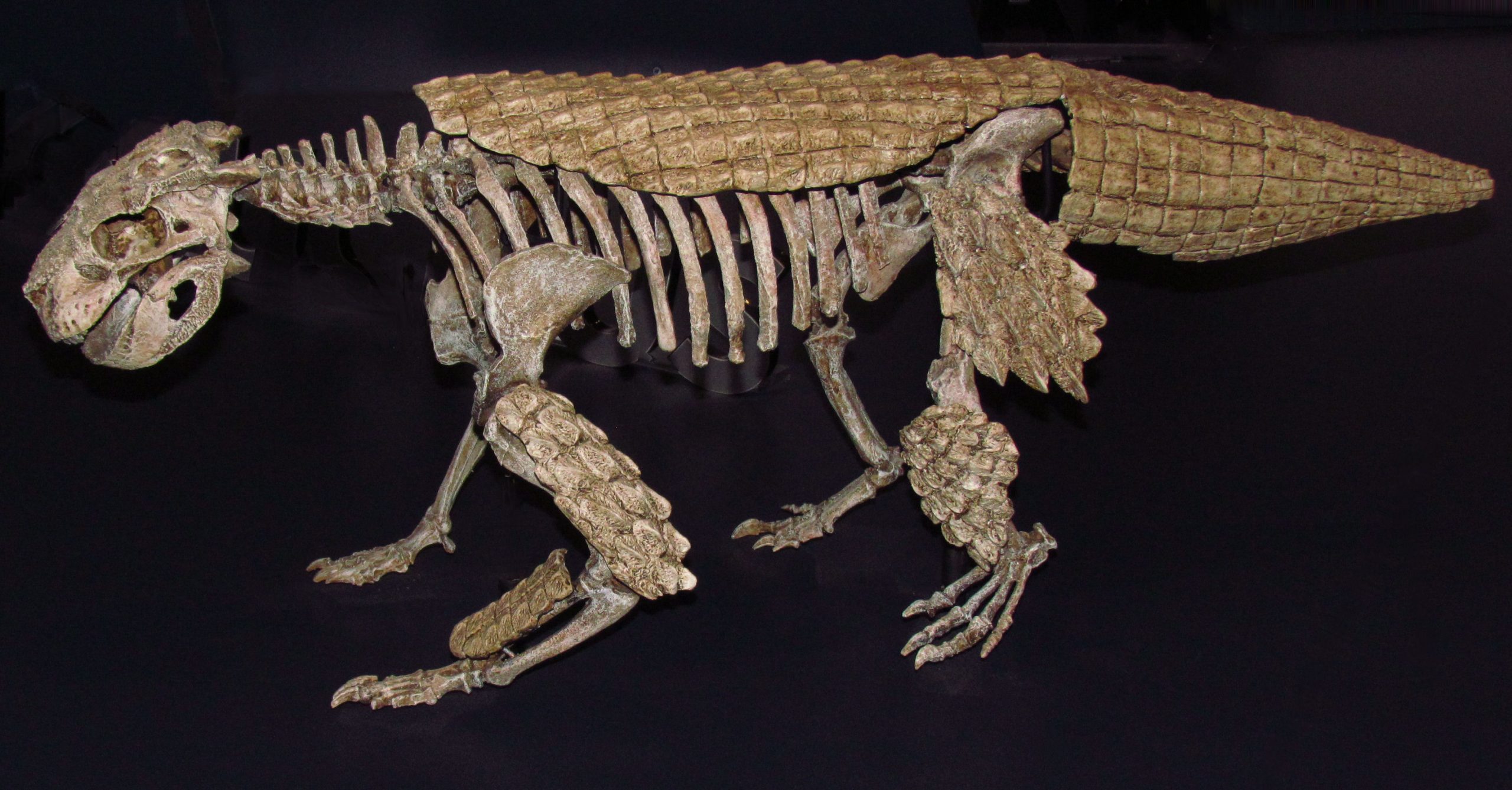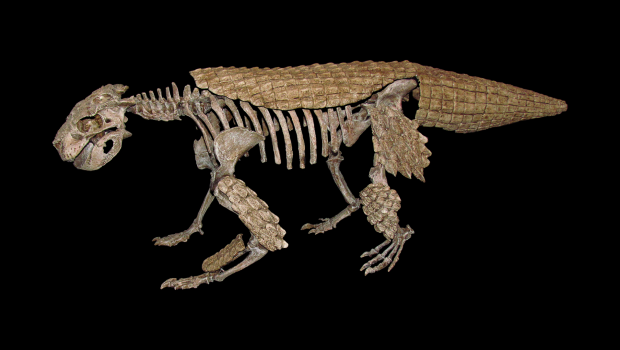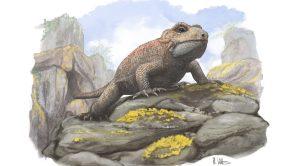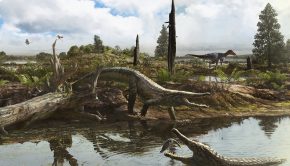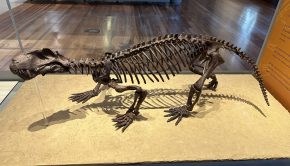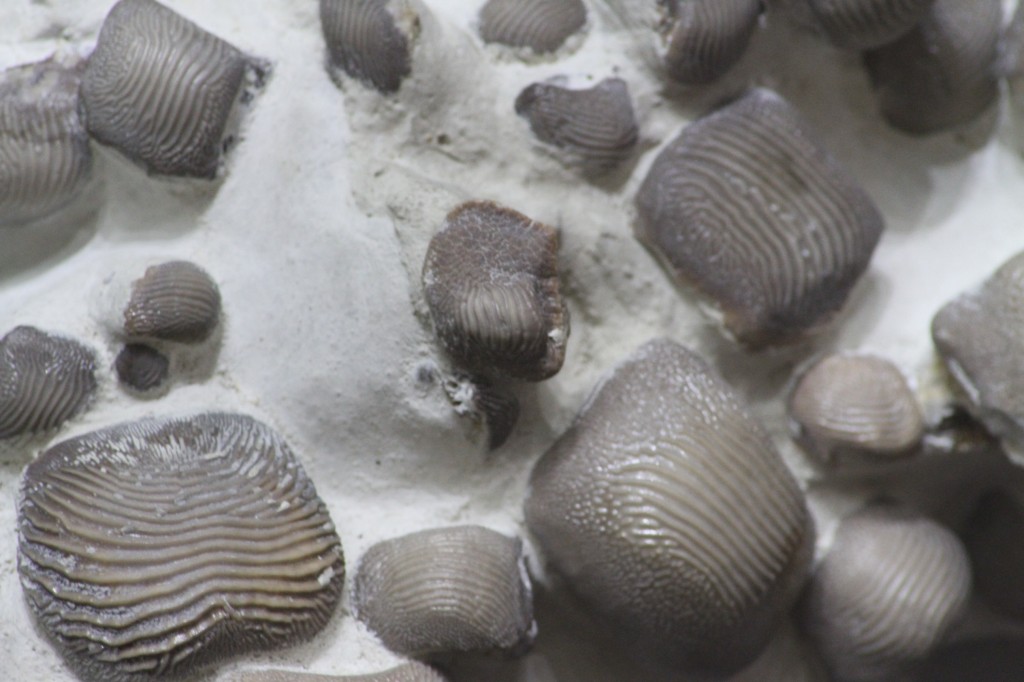Episode 161: Notosuchians
Found in the fossil record between the Jurassic and the middle Miocene, Notosuchia was a highly diverse and strange group of crocodylomorphs, most notable for their terrestrial lifestyle.
Joining us for today’s episode is Dr Yohan Pochat-Cottilloux from the Laboratoire de Géologie de Lyon, who specialises in the study of crocodylomorphs. Together, we will explore the wide range of scientific methodologies that have so far been used to study the lives of these strange reptiles and discuss how they may have looked and behaved.
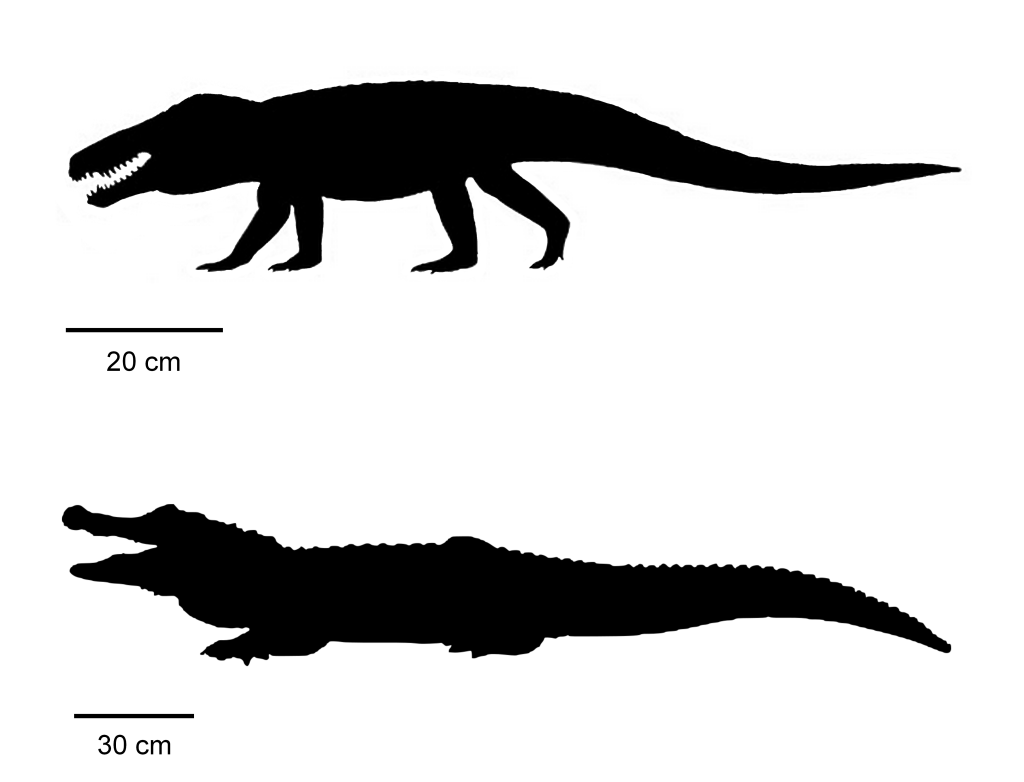
The terrestrial lifestyle of notosuchians is supported by several morphological traits, most notably by their comparatively long legs and inferred upright stance. They also would have had flatter, shorter, more ‘robust’ heads, with jaws and teeth that were adapted for a number of different feeding niches.
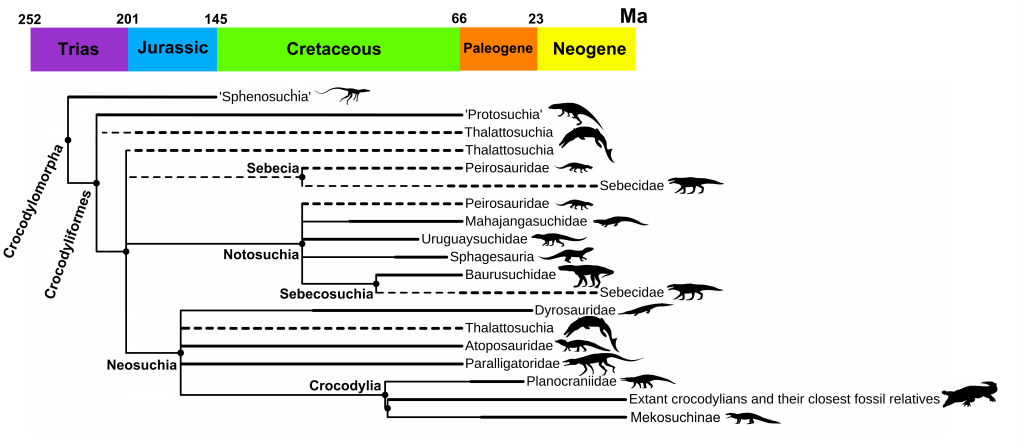
As is the case with many extinct lineages, the phylogeny of Notosuchia is difficult to establish, with some hypotheses placing some species closer to other groups, while others argue that Notosuchia would have been monophyletic.

Geochemical analyses of fossil teeth and bones can provide insight into how notosuchians would have interacted with their environment. For example, depending on the element studied, information can be gained regarding diet, living environment, and even the type of water the organism would have been drinking.
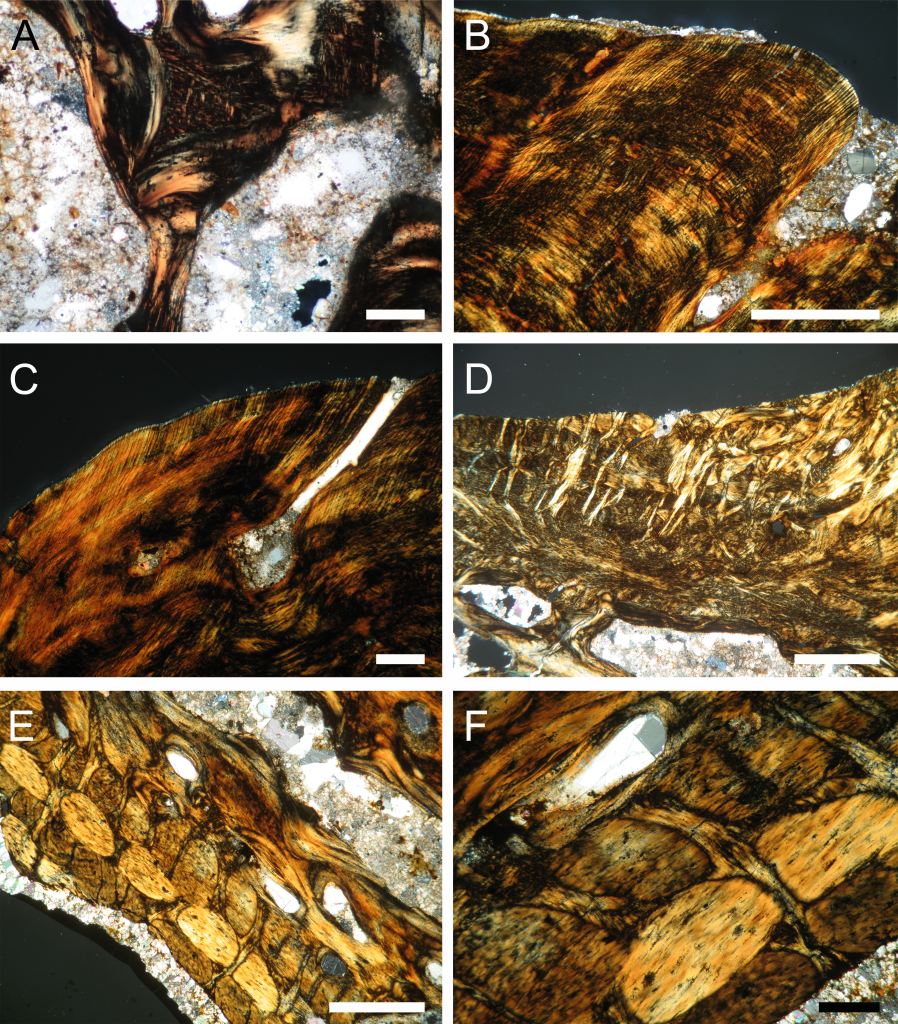
Osteoderms can also be used as a proxy for lifestyle in crocodylomorphs, with species that are inferred to have been terrestrial showing a very different pattern of ornamentation. Furthermore, histological slices have revealed Sharpey’s fibres on the outer surfaces of notosuchian osteoderms, indicating possible sites of muscle attachment.
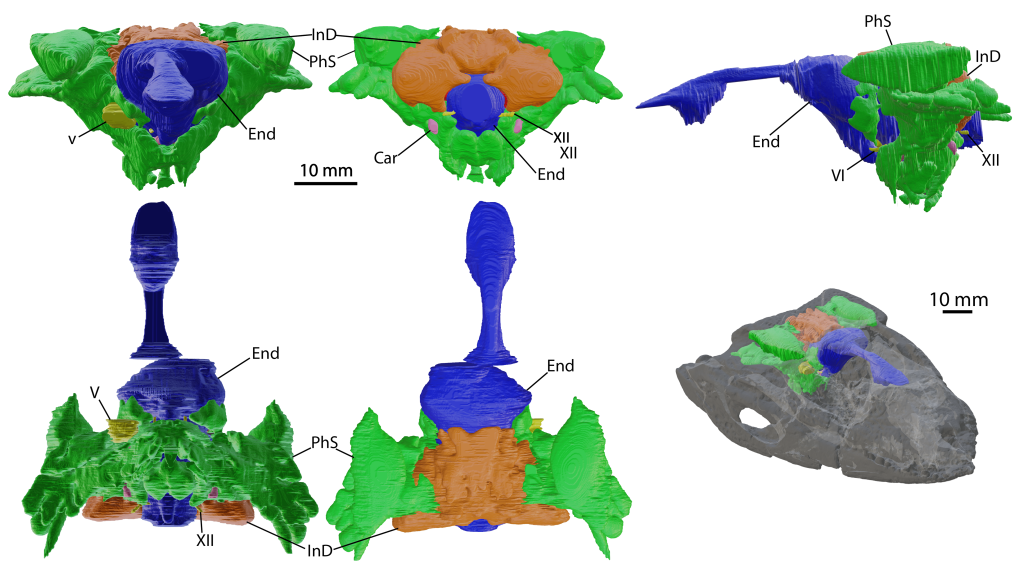
Although there are some cases of notosuchian remains being complete enough for the whole body to be examined, for example for the reconstruction of gait, it is much more common for only isolated structures such as the head to be available for study.
CT scanning can reveal endocranial structures, producing a rough replica of said structures which can then be compared with modern crocodilians. For example, endocasts of the brain can be used to make inferences on brain function.
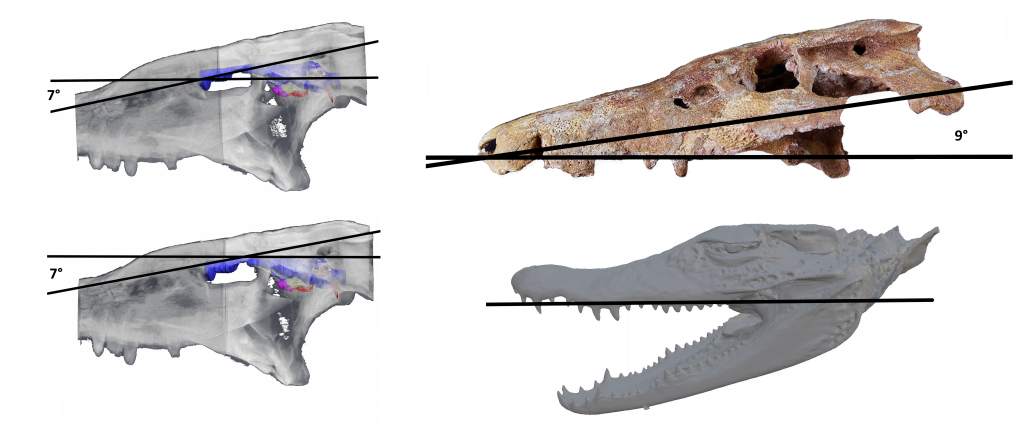
Furthermore, CT scanning and reconstruction of another endocranial structure, the inner ear, can give clues as to how an animal was able to move its head.
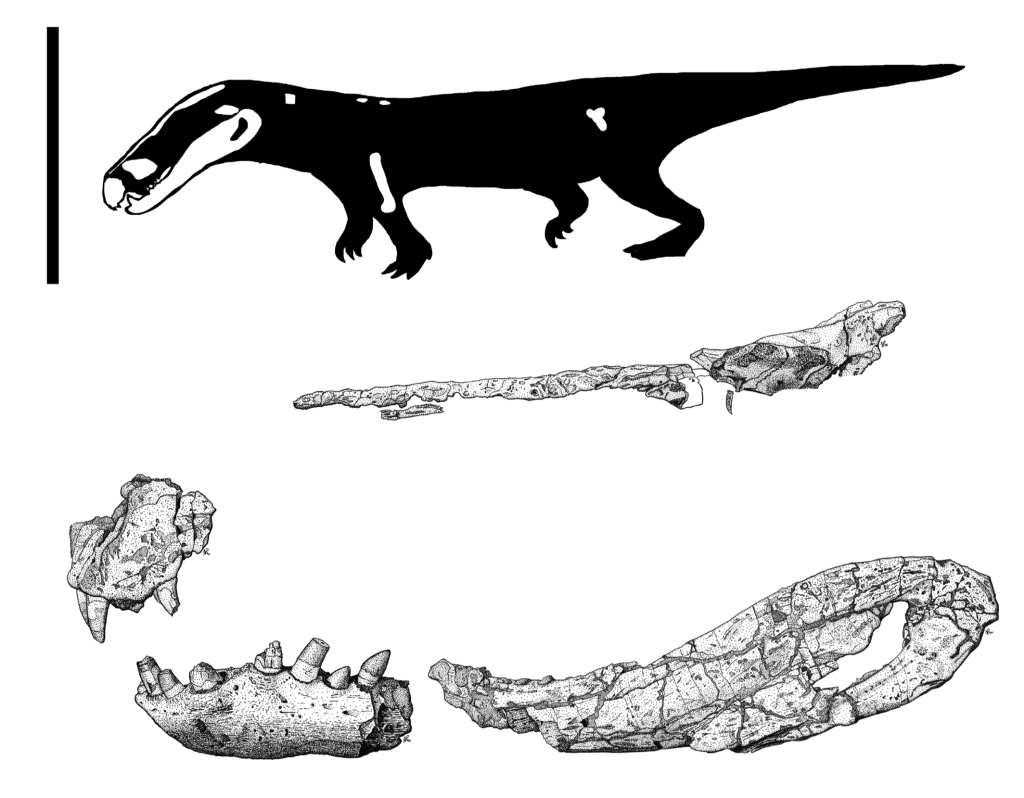
The sebecids, a group often placed within Notosuchia, was one of three lineages within Crocodylomorpha to have survived the K-Pg extinction event. Found in South America, Europe, and Africa, the sebecids even persisted up until the middle Miocene. There is, however, very little knowledge on how they lived during the Cretaceous, and little consensus on how they persisted through the mass extinction which marked it’s end.
Despite beating the odds and persisting through the Kp-g extinction, the notosuchians would ultimately dissapear around the middle Miocene.
